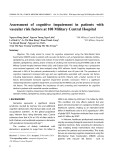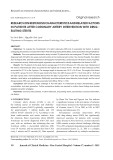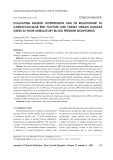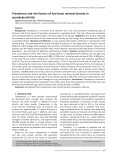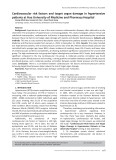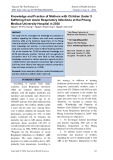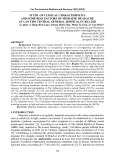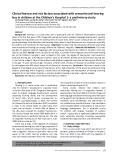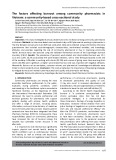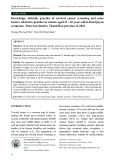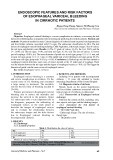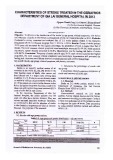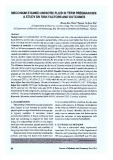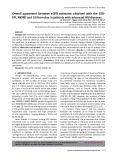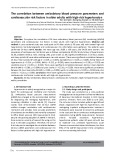
2
2. Research the results of the application of follow-up and diagnosis of
nodules in the lungs of Mayo Clinic hospital-United States after 3-6 months.
2. Urgency of the themes
Lung cancer is an increasing disease, with more than 80% of lung
cancer detected at a later stage, with a short survival time after
diagnosis only about 15% of cases of lung cancer are diagnosed with
surgery. Methods for early diagnosis and early detection have not been
developed in Vietnam, especially for LDCT. The follow up of nodules
has not been studied seriously to have a proper route, both capable of early
diagnosis and not having to follow up many times. Therefore, the
application of advanced diagnostic methods using LDCT and strict follow
up of nodules according to the updated international recommendations is
very necessary in Vietnam.
3. New contributions of the thesis:
This is the first research thesis in Vietnam on the diagnosis of lung
cancer by LDCT. The study has identified results of LDCT, identified
histopathological results after LDCT, after follow-up scans, assessed
the follow-up process after 3-6 months, and oriented physicians about
the probability of cancer in pulmonary nodules
The study contributes to providing clinicians with additional tracking
methods, reasonable time follow up to detect lung cancer in time.
4. The composition of the thesis:
The dissertation consists of 123 pages, of which: Introduction (2
pages), Chapter 1: Overview (38 pages), Chapter 2: Research
Objectives and methodology (17 pages), Chapter 3: Research Results
(29 pages), chapter 4: Discussion (34 pages), conclusion (2 pages),
recommendations (1 page). In the thesis there are (47 tables), 3 charts,
16 figures, 4 diagrams.
The dissertation contains 135 materials, of which 14 are in
Vietnamese, 128 are in English, 3 are in French, the main materials are
in the last 5 years.
CHAPTER 1. OVERVIEW
1.1. Overview of UTP
1.1.1. Definition of UTP
1.1.2. Epidemiology of lung cancer in subjects over 60 years old
1.1.3. Causes and risk factors for lung cancer






